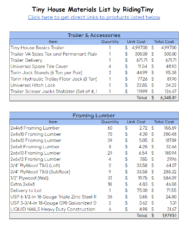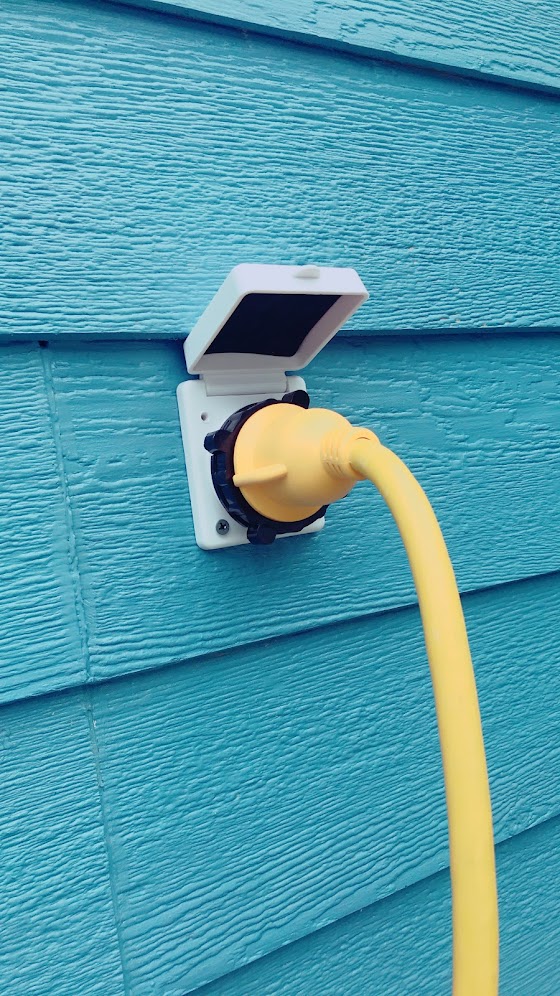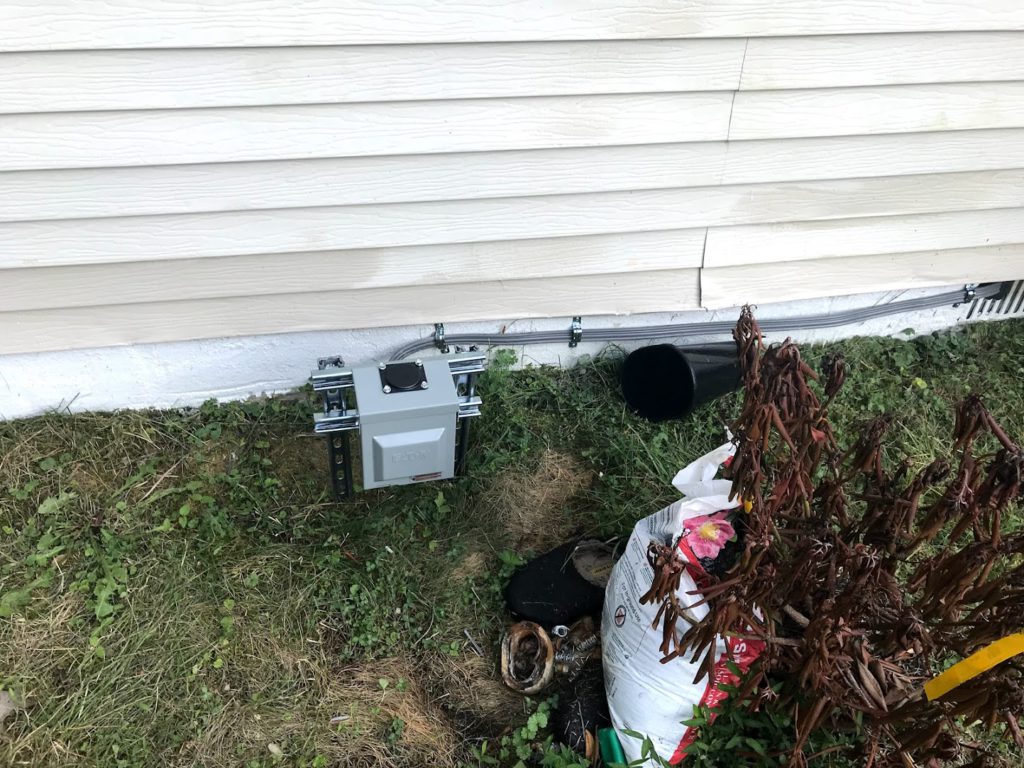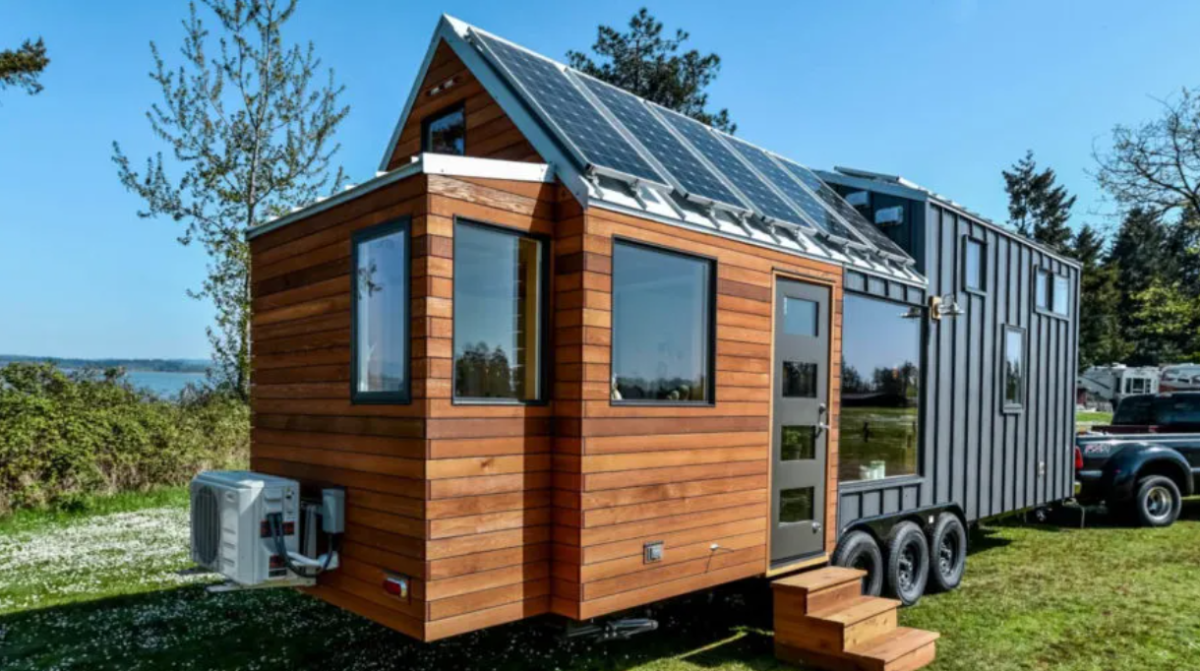A stable foundation ensures a strong tiny home. Let’s learn what goes into making a sturdy tiny foundation!

By entering your email address you agree to receive emails from Riding Tiny. We’ll respect your privacy and you can unsubscribe at any time.
Tiny House Electrical: How to Wire a Tiny House for 50 AMP
- By Sang Kim
- Updated:
Wiring your home can be scary if you have never done it before. This guide will help you overcome your fears by showing you how to wire your tiny house electrical step-by-step.
Here are some of the questions we will cover in this guide.
- How do tiny homes get power?
- How do you hook up a tiny house to utilities?
- How do you install a tiny house electrical panel?
- How much does it cost to wire a tiny house?
Table of Contents
How does a tiny house get power?
There are two main ways a tiny house gets powered: the on-grid or the off-grid option. You can choose either option based on your tiny house electrical needs.
Tiny house electrical on-grid option: via plug-in cord



Unlike a traditional home, a tiny home is mobile by nature. This means you have the ability to connect to an existing power source via an electrical cord.
To power a tiny house this way, you simply plug in your tiny house to the existing home via a cord specifically rated to handle a large amount of current.
In almost all cases, you will need at the bare minimum 30A electrical cord while a 50A electrical cord will be more than sufficient to power a tiny house on wheels. These cords can be easily purchased at any RV store near you or online.
Because all you need to power your tiny house is an electrical cord, the on-grid option will be the cheapest tiny house electrical option for you.
Currently, we are using 50A cord to power our tiny home. To get power, we connect the male end to the outdoor outlet, female end to the tiny house. That’s it!
However, just because you have the cord doesn’t mean you can plug it into any outlet you see. You need to install a dedicated 50A outdoor receptacle and a breaker on the house that is providing power to your tiny.
If you are parking your tiny at an RV park, then this step is already done for you. Otherwise, you would need to ask your landlord’s permission to have an electrician install one for you.
To put costs into perspective, it costs us $200 for the 50A cord and $1,000 to have a 50A outlet installed.
Tiny house electrical off-grid option: via off-grid solar


Because tiny homes have smaller energy consumption than a standard home, it is possible to fully power your tiny house using a combination of solar panels, inverter, and batteries. But you must be mindful of your electrical usage as you cannot put enough panels on your tiny to power all of your favorite full-sized appliances.
To be completely honest, we do not have much experience with off-grid solar installation. So I would suggest doing some more research by checking out the resources listed below.
How much power does a tiny house need?
Tiny homes uses very little energy compared to a standard home. To give you a perspective, my tiny house consumes 250kW to 350kW per month which equates to $25 to $30 per month in energy costs.
But you may ask, how can I calculate power consumption for my tiny home?
This is where you need to bring back your middle school mathematics skills. Power is defined as follows:
Most appliances in a tiny home run on 120V, so for tiny homes wired to accept 120V, the calculation becomes simpler.
For instance, if a fridge draws 3A of current when in use, the fridge’s power usage = Current X Voltage = 3A X 120V = 360W. You can find the current rating of the appliances by looking at their specs in the manual or online.
To get the total power consumption, simply add up all power consumption of the appliances and fixtures. To assist you in this calculation, I created a table of typical tiny home appliances and their power consumption.
Tiny House Appliances Power Table
| Tiny House Appliances | Wattage |
| AC Mini-Split (12,000BTU) | 1,100 W |
| Bathroom Fan | 10 W |
| Blender | 1,200 w |
| Ceiling Fan | 60 W |
| Coffee Maker | 1,000 W |
| Composting Toilet | 3 W |
| Cordless Vaccum | 20 W |
| Dehumidifier | 60 W |
| Dishwasher | 1,500 W |
| Dryer | 1,500 W |
| Electric Oven | Air Fryer | 1,800 W |
| Electric Water Heater | 1400 W |
| Fridge | 150 W |
| Gaming Console | 40 W |
| HRV | 10 W |
| Induction Cooktop | 1,800 W |
| Instant Pot | 1,000 W |
| Kitchen Hood | 100 W |
| Laptop | 50 W |
| LED Lights | 10 W |
| Microwave | 1000 W |
| Outdoor Flood Lights | 60 W |
| TV | 60 W |
| Washer | 500 W |
For most tiny homes, wiring your tiny house for a 50A service running at 120V (6000W) is enough to power all devices in the above table.
That is because you don’t run all the appliances at once nor do you run them 24/7. You simply need to group the appliances into separate circuits.
Can I wire a tiny house myself?
Yes. You don’t need a degree in electrical engineering to successfully wire a home. You just need to know enough to feel confident about what you are doing.
If you still feel uncomfortable handling electrical yourself after reading this section, you should hire professional help.
DISCLAIMER – I am not an electrician and this guide is purely for informational purposes. Do your own research and seek professional help if needed.
Tiny house electrical basics
Here are the resources that you need to review in its entirety. Continue reading on after you complete reviewing the following resources below.
How does electricity flow through a tiny house?
Electricity flows through in the following order to power a tiny home. We limit our discussion to 50A 120V setup since this is what you should install and also most common.
- An electrical outlet – (outlet from an existing home, RV outlet, or off-grid solar)
- RV electrical cord (rated for 50A)
- Electrical inlet (brings power into the tiny home, rated for 50A)
- The supply line (brings power from the inlet to the electrical box, rated for 50A)
- Electrical panel (accepts electricity from the supply line then distributes it to different electrical circuits, rated for 100A)
- Electrical circuits (transmits electricity to the outlets/switches)
- Outlets/Switches/Fixtures (endpoints where electricity gets used)
100A sub-panel with 6 breaker slots are more than enough to handle tiny house electrical loads!
How do you wire a tiny house for 50A service?
With the understanding of how electricity works and how it flows through a tiny house, you can now wire a tiny house for 50A service by completing one step at a time.
Here are all the resources that will take you from start to finish in wiring your tiny house.
- Tiny House Electrical Panel – Tiny Nest
- Tiny House Electrical Rough-In – Handeeman
- How To Wire A Main Electrical Panel
- How to Test Voltage in a Receptacle
- How To Wire Multiple Receptacles
- How to Use Wire Nuts Properly
- Tiny House Design & Construction Guide (This guide has wiring diagrams of typical switch & outlet configurations that I found useful when wiring my home)
Hope this guide was helpful. And as always, happy building!
This stripping tool for tiny house electrical is equivalent to what a framing nail gun is to framing. I’ve used it and I still continue to use it to this day.
For our tiny house, it costs $2,300 to wire a 24′ tiny home. On average, it costs about $1,500 to $3,300 to wire a tiny house electrical.
Yes. Only if you know what you are doing. If you are still struggling after reading this guide, maybe this is a sign that you should hire an electrician to get it done for you.
You can get electrical rough in done in 1-2 days and electrical finishes in 1 day.



By entering your email address you agree to receive emails from Riding Tiny. We’ll respect your privacy and you can unsubscribe at any time.
How does a composting toilet work in a tiny house? And how do you decide which one is the best? In this post, we got all the answers for you.
The tiny house movement is here to stay. Learn everything you need to know about living in a smaller home.
There are many options to choose from when it comes to tiny house roof. But there is a clear winner. Learn all about it in this post!
Taking time to plan and design your tiny home can save you big bucks on your build, plus let you get to customize however you please.
If you’re wondering how to estimate tiny house costs, wonder no more! It’s not as difficult as you may think!



